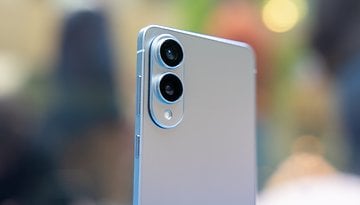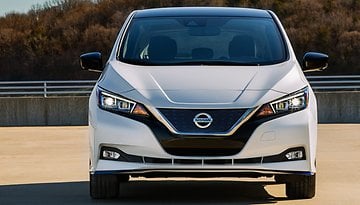Asus Zenfone 7 Pro review: still the reigning selfie king


Asus is continuing with the flip camera approach we saw on the Zenfone 6 from 2019 with a refined, updated version for 2020. The Asus Zenfone 7 Pro is packing flagship specs and genuine innovation, but is that enough to capture the hearts of the smartphone buying public? I've been using it for a little over a week in an attempt to find out.
Good
- The best selfie camera you can buy
- Lovely display
- Excellent battery tech
Bad
- Big and heavy
- Smart key is a bit busy
- Not coming to the U.S. or Canada

Who is the Asus Zenfone 7 Pro for?
The Asus Zenfone 7 Pro launches in Europe today, September 1st. Unfortunately, the smartphone is not scheduled for release in North America, nor is one expected. The prices for the Pro variant comes in at €799, putting the phone in direct competition with devices like the OnePlus 8 and the LG Velvet. Both are very attractive smartphones, so Asus has got a fight on its hands here.
There's also a non-Pro version of the Zenfone 7, which launches simultaneously for €699 in Europe. You get less RAM on the regular version, the SoC is clocked at a slightly lower speed, and there's no OIS on the cameras, but the rest of the specs are identical to the Pro version.
Asus is creating a clear divide between its two premium smartphone brands. For the mobile gamers out there, you've got the ROG Phone 3, and for the camera lovers, there is the Zenfone series. Both phones borrow bits from each other and both feature high-end chipsets and premium performance. You can game on the Zenfone 7 Pro, sure, and you can take photos with your ROG Phone, so Asus has managed to include enough extras that make the Zenfone and ROG series' distinctly suited to those at whom they are targeted?
Having said that, there's one area that all smartphone users care about and that's battery life. It doesn't matter what you want to use your device for, if it's out of battery it's useless. Asus says that the large 5,000 mAh battery was the number one reason why people bought the previous Zenfone 6. Once again, the battery takes center stage here not just because of its size, but the feature set that's baked into this one.
Thus, the Asus Zenfone 7 Pro is not just for those who love taking selfies, but for anyone who wants a true endurance runner with long-term battery saving technology.
What I like about the Asus Zenfone 7 Pro
The AMOLED display
The 6.4-inch IPS display on the Zenfone 6 was one of the few disappointments of the smartphone. Asus has addressed the issue for the 7 series and equipped its new flagship phone with a 6.67-inch AMOLED from Samsung. It's an absolute beauty. The display also benefits from the flip camera design, so you don't have to stare at a notch or hole punch but you still get fairly slim bezels and a screen-to-body ratio of 92 percent. There's also a 90Hz refresh rate on offer this year.
The screen has an outdoor brightness of 700 nits (100% APL), peak maximum brightness of 1000 nits, color accuracy of average Delta E<1, and 110% of DCI-P3. Asus packages this as its All-Screen NanoEdge Display.

The flagship performance
Asus already makes a powerful smartphone in the shape of the ROG Phone 3, but it is now bringing that performance over to the new Zenfone 7 series. Both the Zenfone 7 Pro and the regular Zenfone 7 come with Qualcomm’s Snapdragon 865 Plus 5G Mobile Platform with an overclocked Adreno 650 GPU, LPDDR5 memory, and UFS 3.1 storage. The SoC is clocked at 3.1 GHz on the Pro variant and is supported by an almost excessive 8GB of RAM.
The spec sheet translates well into real-life performance. The Pro variant I tested costs €799, which is no small fee, but can compete with phones in the €1,000+ market with this hardware. Compared to €600-€800 phones like the OnePlus 8 and LG Velvet, the Zenfone 7 Pro shreds, as the kids say. Take a look at the benchmark scores in the table below if you don't believe me.
Asus Zenfne 7 Pro benchmark results:
| OnePlus 8 | LG Velvet | Asus Zenfone 7 Pro | |
|---|---|---|---|
| 3D Mark Sling Shot Extreme ES 3.1 | 7079 | 2990 | 7573 |
| 3D Mark Sling Shot Volcano | 6899 | 2787 | 6632 |
| 3D Mark Sling Shot ES 3.0 | 8998 | 3984 | 9862 |
| Geekbench 5 (Single / Multi) | 910 / 3341 | 565 / 1852 | 983 / 3240 |
| PassMark Memory | 27705 | 20276 | 28567 |
| PassMark Disk | 41757 | 66528 | 152535 |
Performance is not completely about hardware though, with software playing a huge role in the feel of a smartphone during daily usage. Whilst the Zenfone 7 Pro can handle anything you can throw at it, it is lacking a certain snappiness in the software, especially when you compare it to the OnePlus. ZenUI 7 looks like Stock Android but doesn't feel as slick or as smooth as Oxygen OS.
The battery life and features
The Zenfone 7 Pro features a huge 5,000 mAh battery. Whilst the capacity remains the same from last year's Zenfone 6, the charging speed has been upgraded from 18W to 30W. Whilst having a large battery and fast charging is great, what's I like about the Zenfone 7 Pro in this department is the customization available.
There are several battery modes available in the Settings menu for whether you want high performance or certain degrees of battery saving, and you can even create custom battery saving modes that allow you to have almost complete control over what is allowed to drain your juice. Asus has also added controls here for protecting your long-term battery life too, such as the ability to charge slowly overnight from the same fast charger that comes with the phone, and the option to stop charging at a certain threshold - say, 80 percent - which the company says can extend the life of the battery by eight to ten percent over 500 charge cycles. It's the little things that count.

What I don't like about the Asus Zenfone 7 Pro
The big, bulky design
Whilst the internals of the Zenfone 7 Pro are as cutting edge as the smartphone business gets these days, from the outside the new flagship looks somewhat outdated. The flip-camera mechanism is undoubtedly a quirky innovation, but the device is thick, chubby, and heavy at 230 grams.
The size and weight are a result of that huge battery, fast charging tech, and the thickness of the camera module I'm sure, but that's not generally how consumers think when they go shopping for a new smartphone. Given one of the main features of this phone is that you can use the extensive rear camera hardware to take pictures of your own, and your friends', face(s), I'm having a hard time picturing the ideal Zenfone 7 Pro users. No Instagram-loving narcissist is going to carry a smartphone as ugly and unwieldy as this around, are they? And a high-performance tech junkie is more likely to reach for the ROG Phone 3, which features all the same battery-saving tech and flagship power as the Zenfone 7 Pro.

The flip camera (reluctantly)
I can't write a review of the Zenfone 7 Pro and not delve into that flip camera mechanism that makes the phone stand out so clearly from the rest of the market. My former colleague Pierre quite liked the design choice when he reviewed the Zenfone 6 last year, but I've found myself less enthusiastic about it during my time with the phone.
Whilst I support flip methods as a way of keeping the screen completely uninterrupted - I liked the Samsung Galaxy A80 and the Oppo Reno series for the same reason - but the functionality it adds to daily camera usage is not really worth the price of having such a chunky design in my opinion. Sure, you can use the more-than-capable 64-megapixel Sony IMX686 for selfies but the results are only marginally better than what you'd find on an €800 phone with a decent selfie camera in 2020.

The option to have a wide-angle lens for selfies was also kind of niche in 2019, but in 2020 has become something of a norm for phones in this price range. The additional camera quirks, such as the ability to take panorama shots without physically moving the phone itself, are fun to try out but I doubt will become something most people will use on a regular basis. The same goes for the 8K 30fps video recording.

I have no doubts about the durability of the mechanism - Asus has made a solid motor even more robust this year - but the price you pay for such a design in terms of the overall footprint of the device is not quite worth it in my opinion.

The new Smart Key is too busy
Rather than go with a fingerprint sensor under the display or on the rear of the device, Asus has introduced a new all-in-one action Smart Key on the side of the Zenfone 7 Pro. It acts as a fingerprint sensor, can do customizable actions, and is also the power key, all in the same button. Whilst it's nice to save space by having these things combined, when using the phone in daily usage it does get a little busy. The Smart Key could be refined with a software update, but I often found it clumsy when unlocking the device. You never really know when you should be tapping, clicking, or holding it down for certain features. Perhaps this is something you'd get used to over a longer period of time though.
Asus ZenFone 7 Pro technical specifications
Final verdict
The Asus Zenfone 6 was one of the more pleasant surprises of 2019. Sure, the flip-over camera design was cooky, but it also worked. Paired with the rest of the specs and the quality craftsmanship, Asus had delivered a smartphone that delivered on its promises and was pitched at the right price.
The Zenfone 7 Pro continues this trend to some degree. The flip-camera is back and its better than last year. Some will still find it a little gimmicky, but those who liked it last year will love it in 2020. The new flagship also delivers on battery life, and the additional charging flexibility means that you'll likely be able to keep the huge 5,000 mAh battery in tip-top condition for several years of use.
Add to that the power and performance onboard, and you've got a real contender in the sub-€800 smartphone market here. The only real downsides are the large, heavy design - compared to the OnePlus 8 or LG Velvet, for example, the Zenfone 7 Pro is chunky as hell - and the fact that ZenUI is not a universally loved Android interface.
The Zenfone 7 also looks like a decent buy. For a saving of €100, you are only really giving up OIS on the cameras and 2GB of RAM. The reduced internal storage can easily be offset with a microSD card.
The Zenfones are maturing nicely and the 7 and 7 Pro are likely to attract distant admirers in North America, where Asus has decided not to launch them. For Europeans, the Zenfone 7 Pro is a tempting prospect if you can handle the bulk.














